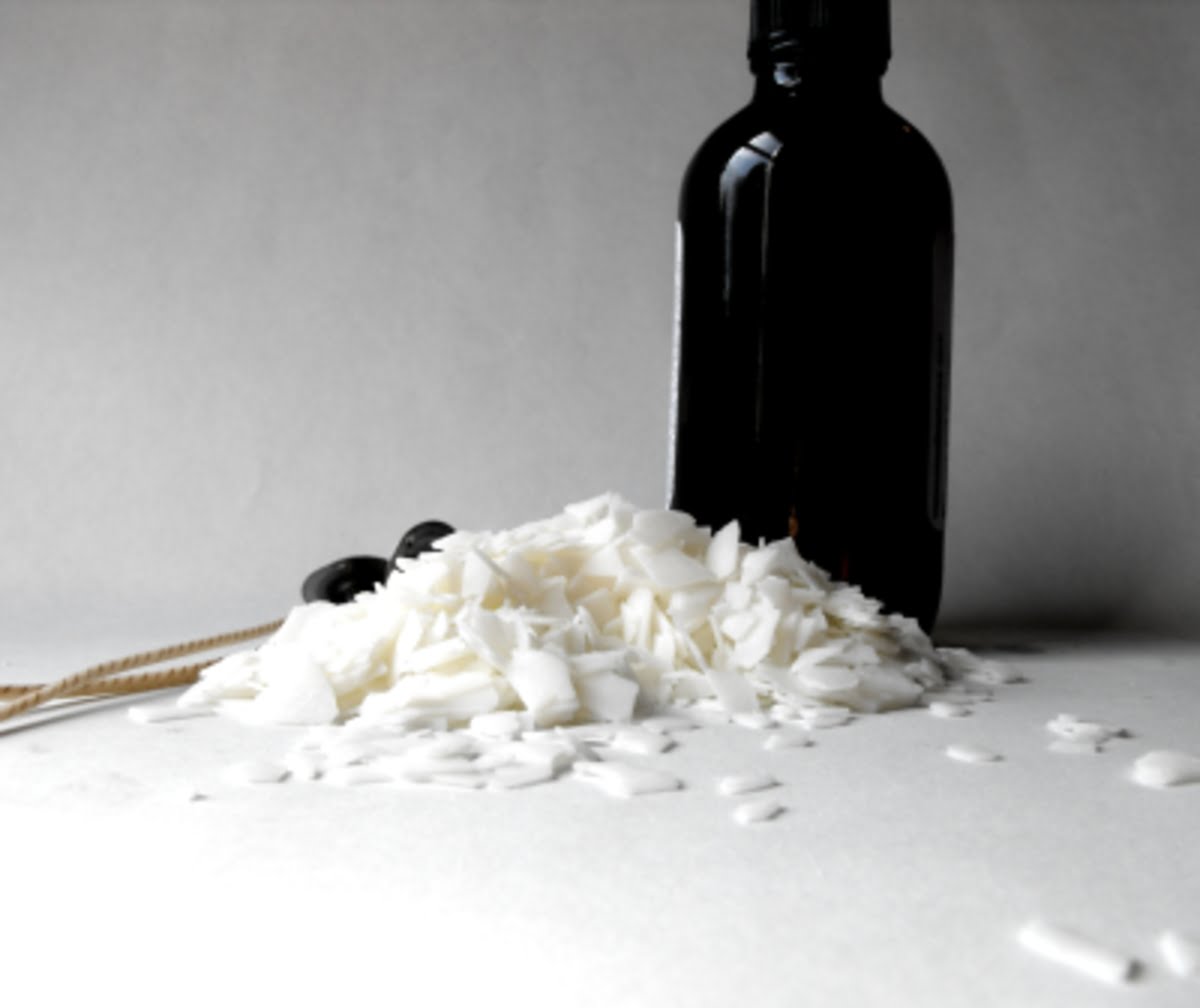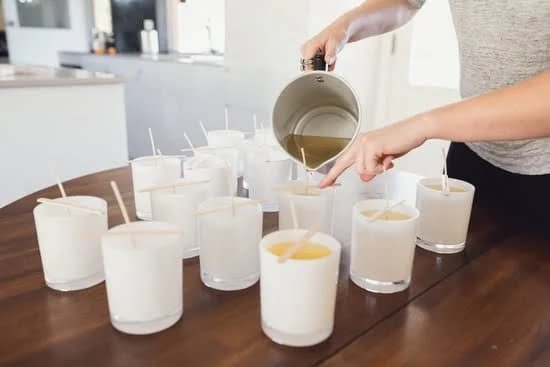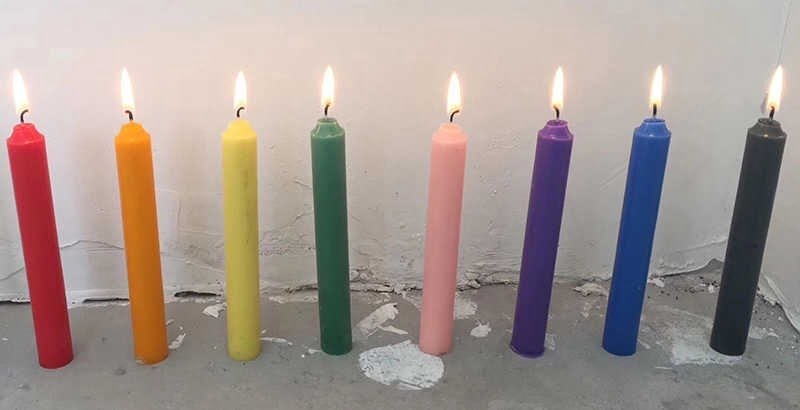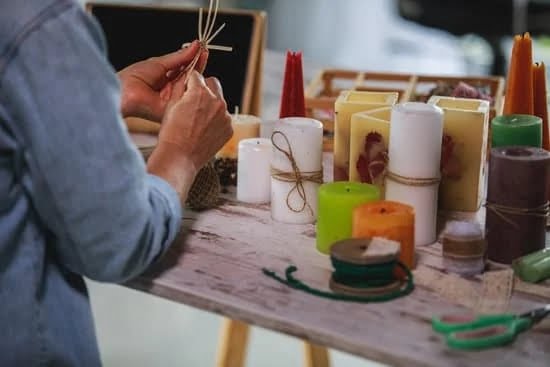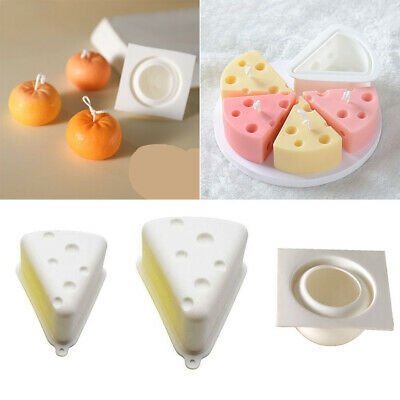Candle making has long been a popular pastime, allowing individuals to create their own custom scented and decorative candles. However, what if there was a way to enhance the burning properties of your homemade candles? That’s where borax comes in. In this article, we will explore the benefits of using borax in candle wick making and how it can improve both the burn rate and stability of your candles.
Borax, also known as sodium borate, has been widely used in DIY projects due to its versatile nature and chemical properties. Its popularity in candle making lies in its ability to enhance the performance of candle wicks. By treating the wick material with borax, you can ensure a more consistent burn rate and prevent tunneling or excessive smoking during candle use.
The history of using borax in various crafts dates back centuries, with civilizations like the Egyptians and Romans harnessing its unique properties. Today, borax is easily accessible and affordable, making it a preferred choice for candle makers looking to improve their craft.
In the following sections, we will delve into the chemistry behind borax’s interaction with wick materials, provide a step-by-step guide on creating borax-treated wicks, and offer tips for troubleshooting common issues that may arise during the process.
So whether you’re a seasoned candle maker looking to elevate your creations or a beginner looking to start on the right foot, incorporating borax into your candle wick making process can bring about significant improvements. Together, let’s explore how this simple yet powerful ingredient can help you achieve optimal results in your homemade candles.
Understanding the Chemistry Behind Borax and Candle Wicks
Borax, a naturally occurring mineral also known as sodium borate, has gained popularity in various DIY projects due to its unique chemical properties. When it comes to making candle wicks, understanding the chemistry behind borax is essential for achieving optimal results.
The interaction between borax and the wick material plays a crucial role in enhancing the burn rate and stability of candle wicks. Borax acts as a flux, which lowers the melting point of the wick material and helps maintain a consistent flame. This results in improved combustion and an even burn throughout the candle’s lifespan.
One important aspect of borax chemistry is its ability to release water molecules when heated. This property allows it to act as a small reservoir of moisture that slowly evaporates during burning, preventing the wick material from drying out too quickly and potentially causing uneven burning or snuffing out of the flame.
To demonstrate this chemical process, experiments have been conducted comparing untreated wicks with those treated using borax. The treated wicks consistently showcase better flame stability and more even burning characteristics. By understanding the unique properties of borax, candle makers can harness its benefits to create high-quality wicks that enhance their overall candle experience.
| Properties | Effects on Candle Wicks |
|---|---|
| Flux | Lowers melting point, improves combustion |
| Moisture reservoir | Prevents quick drying, promotes even burning |
Gathering the Necessary Materials for Making Candle Wicks with Borax
Materials Needed
To make candle wicks with borax, you will need a few essential materials. These include:
- Wick material: Choose a high-quality wick material such as cotton or hemp. Avoid using synthetic materials as they may not interact well with the borax solution.
- Borax powder: Purchase pure borax powder from your local store or online. Make sure to get a sufficient amount for the number of candle wicks you plan to make.
- Water: You will need water to create the borax solution for treating the wicks.
- Container: Prepare a container that is large enough to hold the wick material and allow it to soak in the borax solution effectively.
- Drying rack: Set up a drying rack or use clothespins and strings to hang the treated wicks for proper drying.
Importance of Quality Materials
When making candle wicks with borax, using high-quality materials is crucial for achieving optimal results. The wick material should be free from any contaminants or coatings that could interfere with the absorption of the borax solution. Look for 100% natural cotton or hemp wicks that are specifically designed for candle making.
Purchasing pure borax powder is equally important. Ensure that it does not contain any added scents, colors, or additives that may affect your candles’ performance and scent throw. Using impure or low-quality borax can lead to inconsistent results in terms of burn rate and flame stability.
Investing in quality materials upfront will contribute to the overall success and quality of your homemade candles.
Borax Safety Precautions
It is essential to follow safety precautions when working with borax powder. While it is generally safe when used properly, it’s always better to take precautions:
- Avoid inhaling or ingesting: Borax powder can be toxic if inhaled or ingested in large quantities. When handling borax, wear a mask to minimize inhalation risks and wash your hands thoroughly afterward.
- Keep away from children and pets: Borax should be stored out of reach of children and pets since it can cause irritation or harm if accidentally consumed.
- Use in well-ventilated areas: When preparing the borax solution, make sure you have adequate ventilation to avoid inhaling the fumes.
By gathering the necessary materials and following safety precautions, you are ready to proceed with making candle wicks using borax. The next section will guide you through preparing the wick material for successful borax application.
Preparing the Wick Material for Successful Borax Application
Before applying borax to the wick material, it is important to properly prepare it to ensure optimal results. Follow these step-by-step instructions to prepare the wick material for successful borax application:
- Trim and straighten the wick: Start by trimming the wick material to the desired length. It is recommended to cut it slightly longer than your intended candle size as it may shrink during treatment. Use a pair of sharp scissors to ensure a clean cut. Straighten out any kinks or bends in the wick by gently pulling on both ends.
- Remove any contaminants: Check the wick material for any impurities such as dirt, oil, or leftover wax residue. These contaminants can interfere with the absorption of borax and hinder its effectiveness. To remove them, wipe the surface of the wick with a clean cloth dampened with rubbing alcohol.
- Pre-treat the wick: To improve the absorbency of the wick material, pre-treat it using a mixture of water and washing soda (sodium carbonate). Dissolve 1 tablespoon of washing soda in 1 cup of warm water. Submerge the wick in this solution for about 10 minutes, then remove and rinse thoroughly with water.
- Dry the treated wicks: After pre-treating, allow the wicks to air dry completely before proceeding with borax application. Ensure they are placed in a well-ventilated area away from direct sunlight or heat sources that could cause deformation or overheating.
By following these steps, you can significantly enhance the efficacy of borax treatment on your candle wicks. Properly preparing the wick material sets a solid foundation for achieving excellent burn rates and flame stability when using borax-treated wicks in your candles.
Creating a Borax Solution for Wick Treatment
When making candle wicks with borax, it is essential to create a borax solution that effectively treats the wick material. The borax solution plays a crucial role in enhancing the burn rate and stability of the wicks. In this section, we will provide step-by-step instructions on preparing the borax solution using water and borax powder, as well as explaining the ideal concentration for effective wick treatment.
Instructions on Preparing the Borax Solution
To create the borax solution for treating your candle wicks, you will need high-quality borax powder and distilled water. Start by measuring out the appropriate amount of distilled water based on the number of wicks you plan to treat and place it into a clean container or bowl.
Next, slowly add borax powder to the water while stirring continuously. It is essential to add the powder gradually to ensure proper dissolution and prevent clumping. Aim for a ratio of one tablespoon of borax powder per cup of distilled water for optimal results.
Continue stirring until all the borax has dissolved completely into the water. This process may take a few minutes depending on how much borax you are using. Once dissolved, your borax solution is ready for soaking your wick material.
Ideal Concentration of Borax in the Solution
The concentration of borax in your solution is crucial for effective wick treatment. Too little borax may not yield noticeable benefits, while too much can lead to undesirable effects such as excessive smoke or an unstable flame.
For most candle wick materials, a concentration of 10-15% is recommended. This means that if you are using one cup (8 ounces) of distilled water, you would add around one tablespoon (0.5 ounces) of borax powder. However, it is always advisable to refer to the specific instructions provided by your wick material manufacturer for the best results.
Finding the right concentration may require some experimentation and adjustment. It is recommended to start with a lower concentration and gradually increase if desired effects are not achieved. Keep track of your borax-to-water ratio to replicate successful treatments in the future.
Creating a borax solution for treating candle wicks ensures that the borax is evenly distributed and properly absorbed by the wick material, maximizing its benefits. Following these instructions for preparing the solution and maintaining an ideal concentration will contribute to successful wick treatment, resulting in improved burn rate and stability in your candles.
Soaking and Drying the Wick Material in the Borax Solution
Once you have prepared the borax solution, it is time to soak and dry the wick material. This step is crucial in ensuring that the borax is properly absorbed by the wick, enhancing its burn rate and stability. Follow these detailed instructions for successful soaking and drying:
- Step 1: Prepare a container: Find a container that is large enough to accommodate your wick material without any folding or bending. It should also be deep enough to allow for complete submersion of the wicks.
- Step 2: Submerge the wicks: Place the wicks into the container filled with your prepared borax solution. Gently press them down to ensure they are completely submerged.
- Step 3: Soak for recommended duration: The ideal duration for soaking can vary depending on various factors such as wick thickness and material. As a general guideline, it is recommended to soak cotton or linen wicks for at least 30 minutes, while thicker or more absorbent materials may require longer soaking times.
- Step 4: Check for proper absorption: After the recommended duration, carefully remove one of the soaked wicks from the solution. Check if it has absorbed enough borax by gently squeezing it between your fingers. If there is still excess liquid coming out, return it to the container for further absorption.
- Step 5: Properly dry the treated wicks: Once you are satisfied with the absorption, lay each soaked wick flat on a clean surface or hang them vertically to air dry. Ensure good ventilation in the drying area to facilitate faster drying. Depending on environmental conditions, it may take anywhere from a few hours to a day for the treated wicks to completely dry.
It is important to note that proper drying is essential to prevent any residual borax from affecting the performance and safety of the candles. Ensure that the wicks are completely dry before using them in your candle-making process.
By following these soaking and drying guidelines, you can ensure that your wick material effectively absorbs the borax solution, allowing for optimum burn rate and stability in your homemade candles.
Testing and Adjusting Wick Performance
Once the wicks have been treated with borax and are completely dry, it is important to test their performance before using them in candles. Testing allows you to assess the burn rate and flame stability of the wicks, allowing you to make any necessary adjustments.
To test the performance of the borax-treated wicks, light one end of a wick and observe how it burns. Pay attention to factors such as burn rate, flame height, and overall stability. A well-treated wick should have a consistent burn rate with a steady flame that doesn’t flicker or sputter excessively.
If you notice that the wick burns too quickly or that the flame is too weak, you may need to make some adjustments. The amount of borax applied to the wick can greatly affect its performance. If the burn rate is too fast, try reducing the amount of borax used in the treatment process. On the other hand, if the flame is weak or unstable, applying a slightly larger amount of borax may help improve its performance.
It’s also important to consider external factors that can impact the performance of your candle wicks. Factors such as candle size and type of wax used can affect how well a borax-treated wick performs. Experimentation may be needed to find the perfect balance between these variables for optimal results.
Remember that each batch of wicks may require different adjustments based on various factors. It’s always a good idea to keep notes during testing for future reference so that you can reproduce successful results consistently.
| Factors | Adjustments |
|---|---|
| Burn Rate Too Fast | Reduce amount of borax used in treatment process |
| Weakened or Unstable Flame | Increase amount of borax used in treatment process |
| Candle Size | Determine appropriate wick size for candle dimensions |
| Type of Wax Used | Consider adjusting the treatment process based on wax type |
Tips and Tricks for Making Candle Wicks with Borax
When it comes to making candle wicks with borax, there are a few tips and tricks that can help ensure success and optimal results. Here are some valuable insights and suggestions to consider when embarking on this creative DIY project.
Firstly, it is important to choose the right type of wick material for your candles. Cotton wicks are popular options as they burn evenly and have good absorption properties. However, make sure to select a high-quality cotton wick that is specifically designed for use in candles. This will ensure that the wick performs well when treated with borax.
Another tip is to properly prepare the wick material before applying the borax solution. It is recommended to straighten the wick by gently running it through your fingers or using a tool like a toothpick. This helps to remove any loose fibers or twists that may affect the performance of the finished candle wick.
Next, when preparing the borax solution for treating your wicks, it is important to achieve the ideal concentration of borax. A general guideline is to use one tablespoon of borax per cup of water. However, you may need to adjust this ratio depending on factors such as the desired burn rate and stability of your candle flame. It’s always advisable to start with a small batch and conduct some tests before treating all your wicks.
During the soaking process, make sure that each individual piece of wick material is fully submerged in the borax solution. Gently press down on the submerged area if needed to ensure proper absorption. Additionally, allow enough time for thorough soaking but be cautious not to exceed the recommended duration as over-soaking can lead to brittle wicks.
Lastly, don’t hesitate to troubleshoot any issues that may arise during your candle-making journey with borax-treated wicks. If you find that your candle burns too quickly or produces an unstable flame, you may need to adjust the amount of borax applied to the wick. Increase or decrease the concentration slightly and test the performance until you achieve the desired burn rate and stability.
By following these tips and tricks, you can enhance your experience in making candle wicks with borax. With a bit of experimentation and creativity, you can harness the benefits of borax in your candle-making endeavors and bring beautiful, long-lasting candles to life.
Conclusion
In conclusion, making candle wicks with borax offers several benefits for candle enthusiasts and DIY enthusiasts alike. The use of borax in candle wick making enhances the burn rate and stability of the wicks, resulting in a more efficient and enjoyable candle experience. By understanding the chemistry behind borax and its interaction with the wick material, crafters can create high-quality candles that burn evenly and emit a steady flame.
By carefully following the step-by-step process outlined in this article, readers can successfully make candle wicks using borax. It is important to gather high-quality materials and to properly treat the wick material before applying the borax solution. Soaking and drying the treated wicks ensures optimal absorption, which contributes to improved performance when burning the candles.
Furthermore, testing and adjusting the performance of the borax-treated wicks allows crafters to fine-tune their candles’ burn rate and flame stability. This experimentation not only leads to better results but also opens up possibilities for customization and personalization.
It is worth noting that borax can be used for various other DIY projects beyond candle making. Its versatility makes it an essential ingredient for those who enjoy exploring different crafts. Whether it’s creating homemade laundry detergent or crafting natural cleaning solutions, harnessing the benefits of borax adds an extra touch of creativity and sustainability to DIY endeavors. So go ahead, unleash your creativity, and see what other exciting uses you can discover for borax in your own projects.

Welcome to my candle making blog! In this blog, I will be sharing my tips and tricks for making candles. I will also be sharing some of my favorite recipes.

